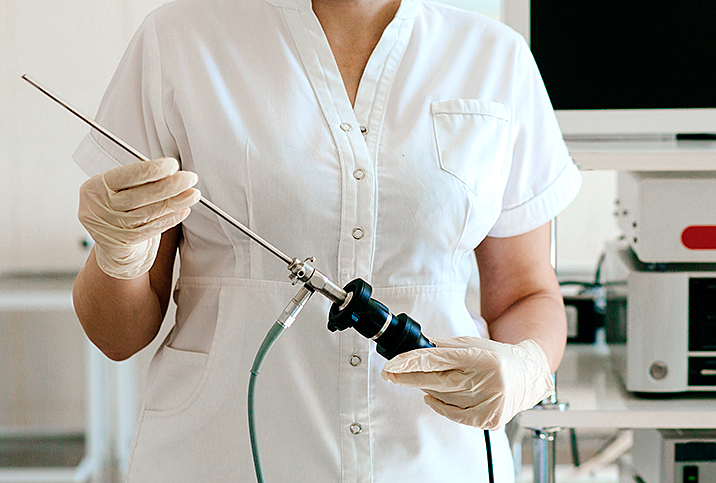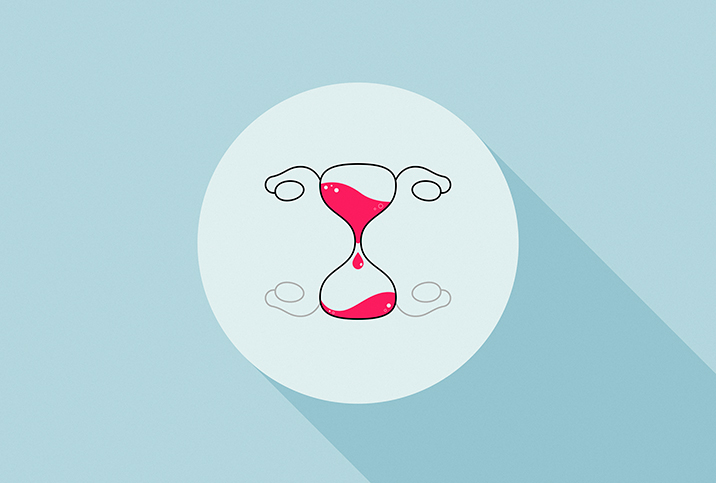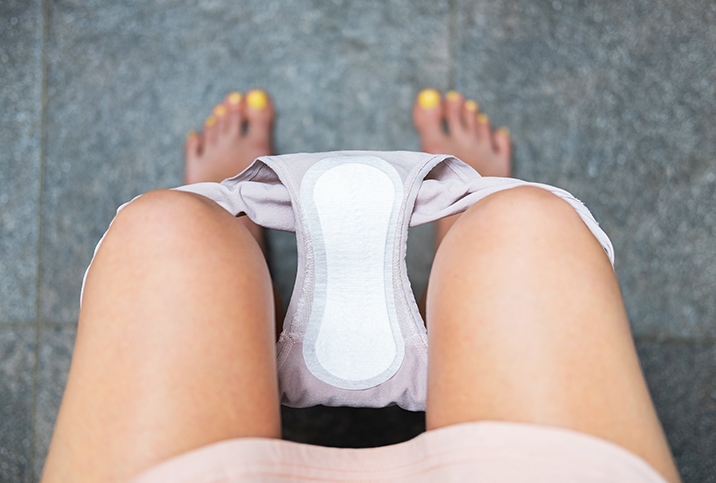A Hysteroscopy Exam Could Get to the Root of Your Irregular Bleeding

If you're suffering from unusual bleeding, or a recent transvaginal ultrasound came back with abnormal findings, your doctor may recommend a hysteroscopy exam—a procedure used to diagnose and treat uterine problems.
A hysteroscopy is often carried out in an outpatient surgery unit, which means you won't need to stay in the hospital overnight and can relax in your own bed soon after.
So what exactly is this procedure, and why might you need one? We talked to experts to find out.
Investigation
There are many reasons why your doctor may refer you for a hysteroscopy, but the main cause for concern is a sudden change in your period.
"A hysteroscopy is often used to investigate several symptoms, such as heavy periods, painful periods and irregular vaginal bleeding," said Hemant Vakharia, M.B.B.S., M.R.C.O.G., a consultant gynecologist and advanced laparoscopic surgeon at London Gynaecology. "It may also be recommended after a scan if the scan suggests the lining of the womb (endometrium) is thicker than expected or if the scan suggests there may be a polyp or fibroid in the womb."
A hysteroscopy may also be recommended to remove your intrauterine device (IUD) if it has become attached to the uterine wall, as removal can be difficult without the use of an anesthetic.
If there are any abnormal findings during a diagnostic hysteroscopy, an operative hysteroscopy may be scheduled at a later date or they may perform it at the same time to avoid a second surgery.
Typically, your doctor will arrange for the appointment to take place the week after the end of your period, as this allows the gynecologist the best possible view of the uterus. However, if you experience spotting or you get your period on the day of surgery, it may still be able to proceed, as long as you make a doctor or nurse aware of this.
The procedure
A hysteroscopy is a relatively quick procedure that can be carried out without an anesthetic. However, if it takes place at a surgery center, a sedative may be used to relax the patient and minimize discomfort.
The doctor will begin by putting a speculum in, followed by a tenaculum, which is a type of clamp that holds the cervix in place, explained Tara Scott, M.D., an OB-GYN, founder of Revitalize.
A uterine sound is then inserted to determine the direction of the uterine canal and to measure the length of the canal. Metal dilators of varying sizes will be inserted until the cervix is dilated. Once this happens, the doctor will use a hysteroscope to look inside the uterus.
Fluid will be used to distend the uterine cavity, providing the doctor with a better view inside. When the uterus is distended, the scope will be used to identify fibroids, polyps or growths. If something is found during a diagnostic hysteroscopy, the doctor will usually remove it using scissors and send it to pathology where it can be examined.
A hysteroscopy can take between 5 and 30 minutes, depending on whether anything is found or removed during the procedure. The doctor will usually discuss their findings with you before you leave.
Diagnosis
If you have abnormal results, there could be a few reasons for this. According to Scott, the main causes are submucosal fibroids, uterine septum, and endometrial and endocervical polyps. These conditions can be the cause of infertility and excessively heavy bleeding in many women, which is why an early diagnosis is very important.
The removal of polyps and fibroids can prevent pain and bleeding in between periods. And in some cases, this will allow women to conceive without further intervention.
Potential complications
Most people will experience little to no side effects during a hysteroscopy. But, as with any procedure, complications can arise in a small minority of patients. Accidental damage can occur, or an infection of the womb, which will need to be treated with antibiotics. Excessive bleeding is a rare but very serious side effect and will need to be resolved with either medication or a surgical procedure to stop the bleeding.
"In some cases, the neck of the womb can be very tightly closed, and this can make it difficult to pass the camera into the womb," Vakharia said. "In these cases, the procedure may be stopped, and the patient may need to have some additional imaging for further investigation."
While many women will experience only mild pain or discomfort during the procedure, it can cause severe pain for others. If you have any concerns prior to the appointment, be sure to let your doctor know so they can provide painkillers or a sedative to ease any discomfort.
Recovery period
"Recovery is pretty quick. If you have had sedation, you could be groggy for a few days. You may have some light cramping or bleeding the day of the procedure or the next day, but generally, you are fine to resume normal activity," Scott said.
If the doctor filled your uterus with air, you could experience uncomfortable gas and bloating in the next one to three days following the procedure. You may also experience an increase or sudden change in discharge, which should usually subside after a couple of days. If there is an unpleasant smell to the discharge or the side effects do not subside shortly, contact your doctor for advice.


















